This is possibly one of the two best restaurants in the Western world for shellfish. That is, the variety as well as the pristine freshness are the hallmark of D’Berto. I know that it is a strong statement to call a restaurant “the best”, but I have dined there five times, four in the last year, and Brandon twice this Spring. We believe that what makes D’Berto so special is, first, the quality of the Galician shellfish and, second, the precise cooking skills in handling them. When one converses with the owner, Alberto, the third element underlying the quality becomes clear. He has a curious and distinguished palate, and he travels not only throughout Spain but also to other countries in search of perfect ingredients and possesses the knowledge of where and when to find great products.


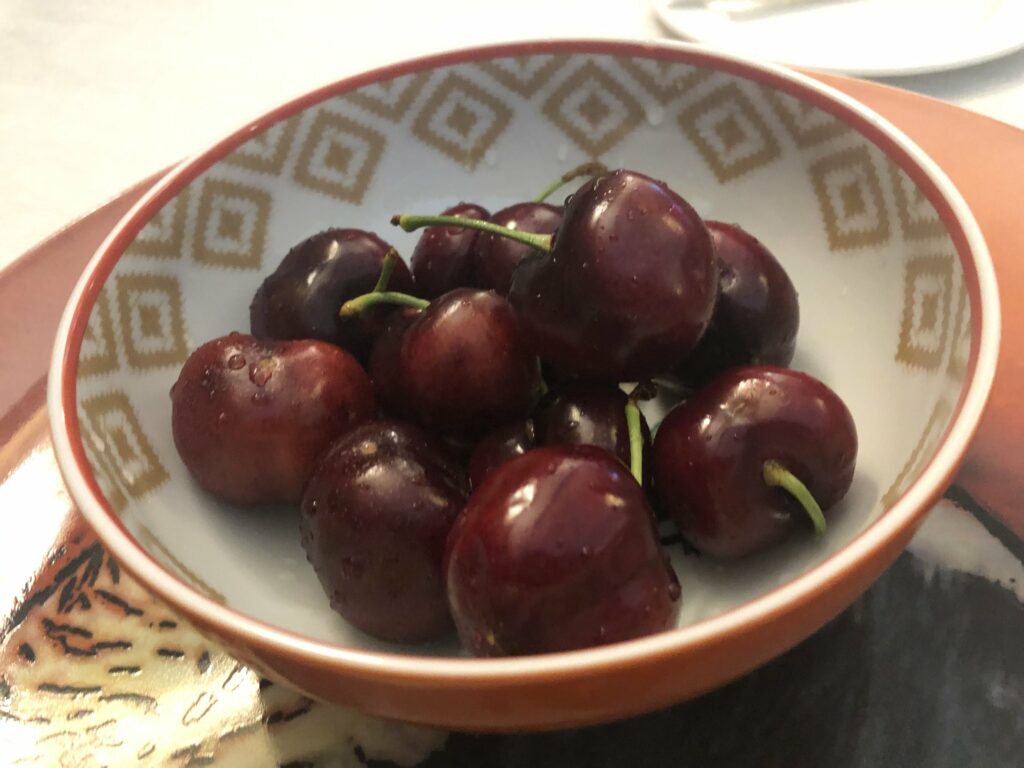
For instance, he was generous to share with us some cherries he received from a friend’s garden in Lerida, Spain. They were the size of plums, very firm, juicy, and actually amazing. Alberto is also a wine lover, and it is possible to pair your shellfish with some remarkable Galician white wines (like Emilio Rojo, Do Fereiro, Albamar, Pazo Senorans) or well-chosen champagne. One key feature of this restaurant is consistency. For example, in all my five visits we ordered large cigalas. They were always live and the length of an arm from the elbow to the fingertips, as you see Alberto placing one on his arm. They are also grilled perfectly (a la parilla).
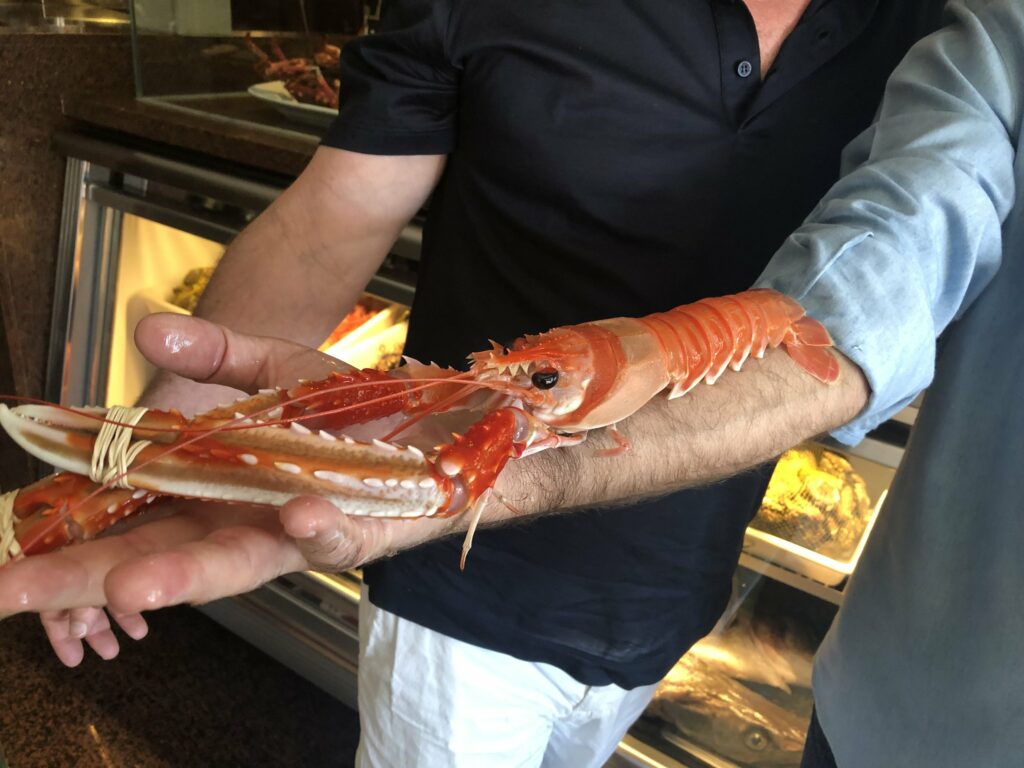
If one sums up the experience of seafood at D’Berto, we can simply say that most dishes constitute a reference point against which to measure dishes made with similar products. Take cigalas. They are firm, sweet, juicy, and not cottony. I have seen the same level once in Table d’Aki in Paris and once in La Taupiniere in Brittany. These are reference points. Akihiro served langoustines, like his master Bernard Pacaud of L’Ambroisie, with a sesame tuile, crisp spinach, and a lightly curried beurre blanc. Is this better than, or preferable to, grilling with sea salt? We believe there is no easy answer to this question. Messieurs Pacaud and Aki are able to retain the purity and elegance of this special creature while achieving a layered taste. But perfect grilling which, as a technique, is well suited to this product, achieves the same result. When one takes a bite of cigalas at d’Berto, one can appreciate the elegance of its texture and the multi-dimensionality of its sweet-minerally saline taste which is fully brought out when it is grilled (as opposed to being eaten raw). One can argue that the terroir of the Galician sea for shellfish is akin to the terroir of Vosne Romanee for grand cru. Obviously nobody in his/her right mind would advocate to blend the pinot noir of La Tache with another cepage. Yet it is acceptable to take risks with a perfect live langoustine to combine it with a sauce and other elements. When this succeeds, which is rare, it is as good as a perfect “a la parilla” version. What we are objecting to here is the perception that “grilling” is considered “simple” and fine dining style combinations are considered “sophisticated” and more worthy of gastronomic attention. Our claim is that the best examples of both styles are equally hard to achieve and worthy of gastronomic praise. To call the d’Berto treatment of shellfish “simple” is simplistic to say the least. This perception also gives the wrong incentives to restaurants as “perfect product” restaurants become harder to sustain in the face of competition and attention given to the trendy, PR-conscious places that put a premium on photogenic dishes.

At d’Berto, one finds many different shellfish of premium quality. Some are served raw; others are boiled, grilled or fried. Other than the empanadas which are merely serviceable, everything is remarkable. That is, the shellfish retains the purity and the essence of its taste. So what one likes the most depends on taste, such as a preference for cigalas or centollo, or both.
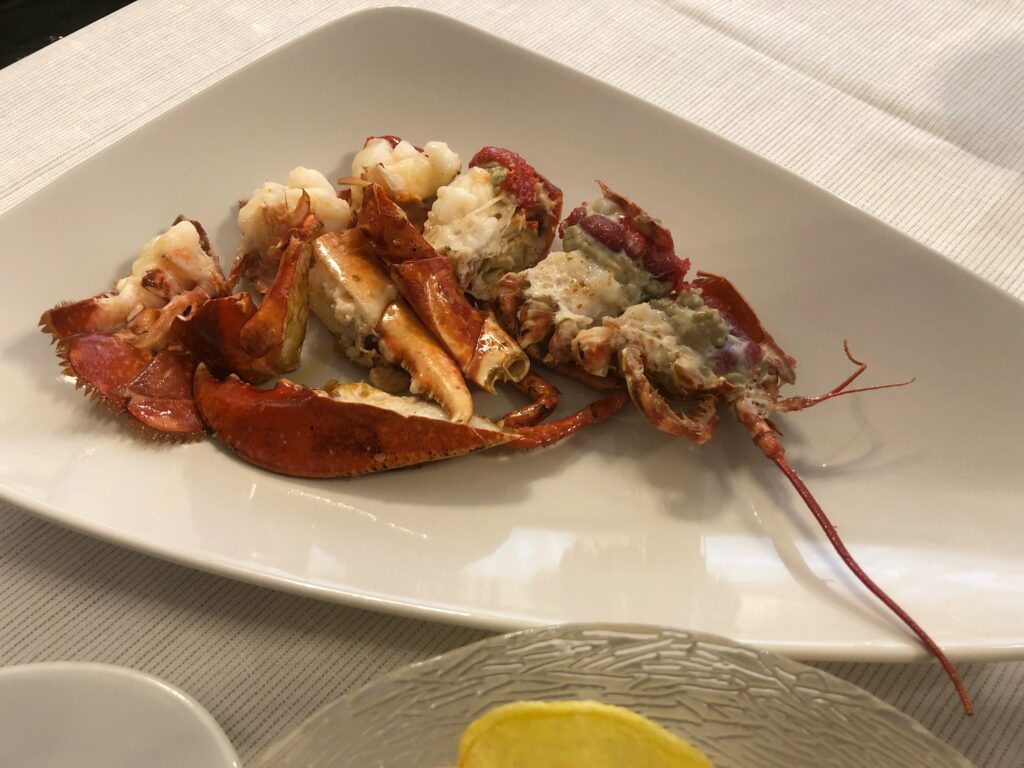
Here is a list of what we tried in our last several visits, all of which we would love to repeat in future visits.
1. Camarones. These small and firm shrimps and are available in late fall and winter.
2. Zamburinas negra. They have an amazing depth in taste. I have only seen this level wild small scallops at Güeyu Mar.
3. Raw Almejas fina and Galician wild oysters. The former is a very tender and sweet. It is a breed of clam with a complex taste and long finish. The flat Galician oyster is crunchy, slightly bitter and with mineral flavors. They are a perfect accompaniment to an Albariño from the region (Rias Baixas) with a chucked raw oyster and fresh almond nose and intense saline mineral notes, combined with restrained fruitiness.
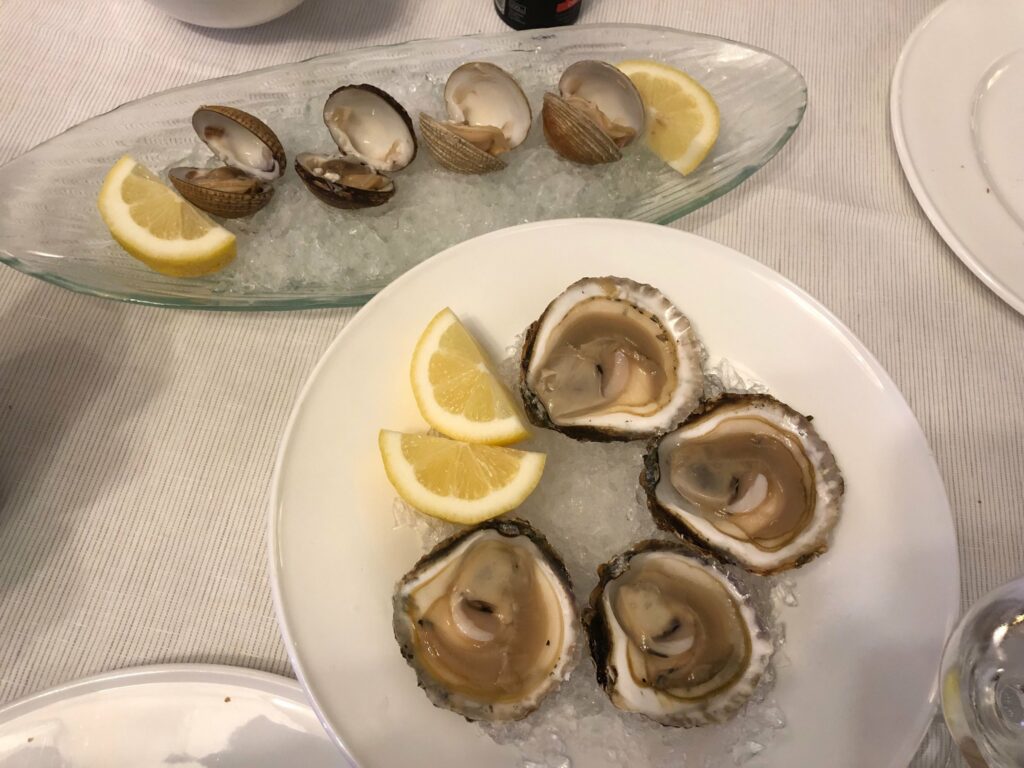
4. Longueiron a la plancha. If one likes navajas (razor clams), this is a must.
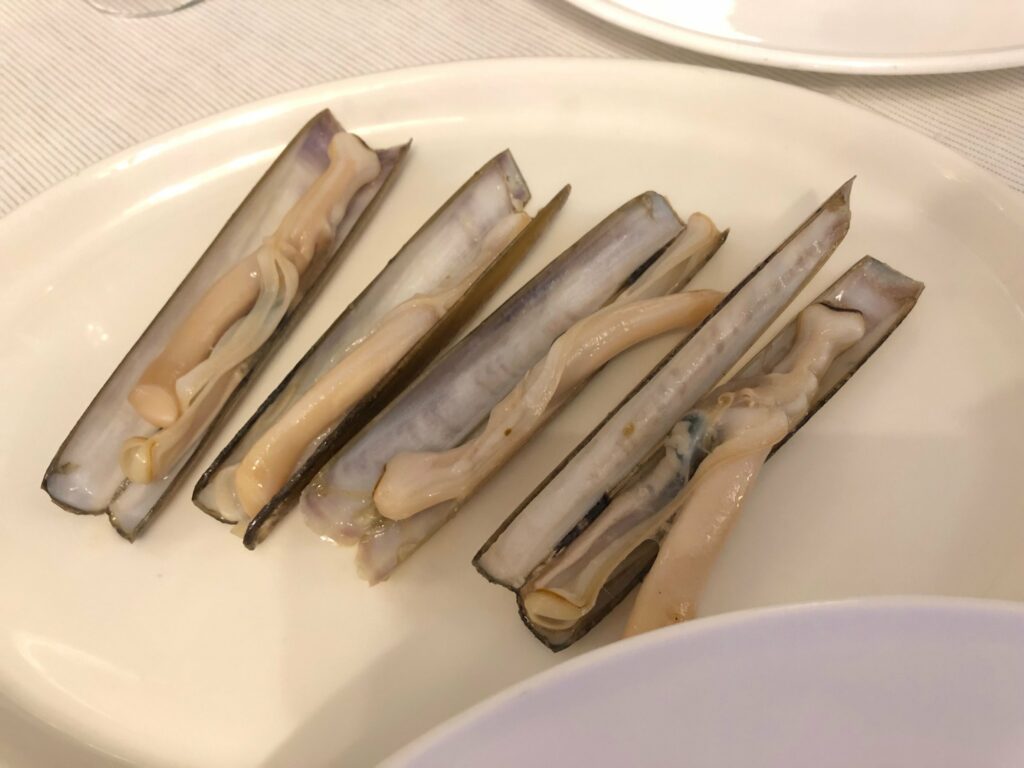
5. Gambas alistado. These are gambas rojo from Huelva which are less sweet than those from Denia or from Palamos, but still very good.
6. Berberechos. These are clams that are not as complex as almejas fina, but delicious when they are so fresh.
7. Percebes. They are salty and chewy, among the best I have had in Spain.
8. Cigalas. These are live and a no miss.
9. Fried Galician lobster. This is another reference point.
10. Centollo (spider crab). Ask for the version that is not cleaned as one should not miss the juice in the body. To me this is an amazingly complex natural fish soup. Personally I prefer this dish to the great lobster.
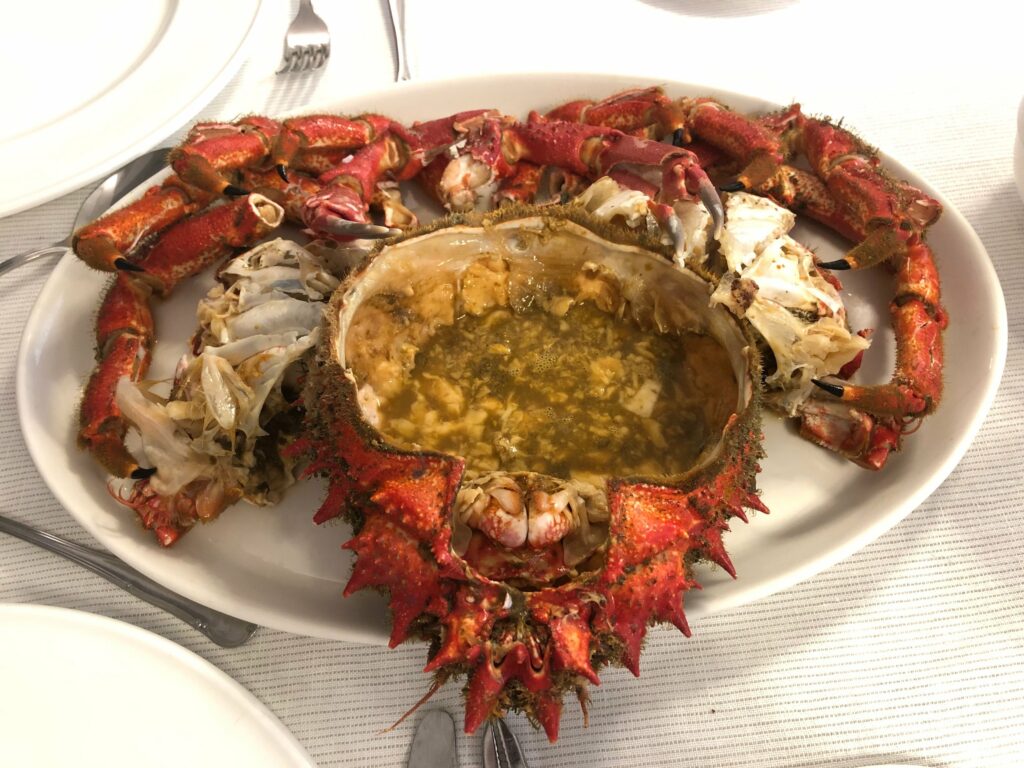
11. Cheese cake. This version is rustic and quite good.
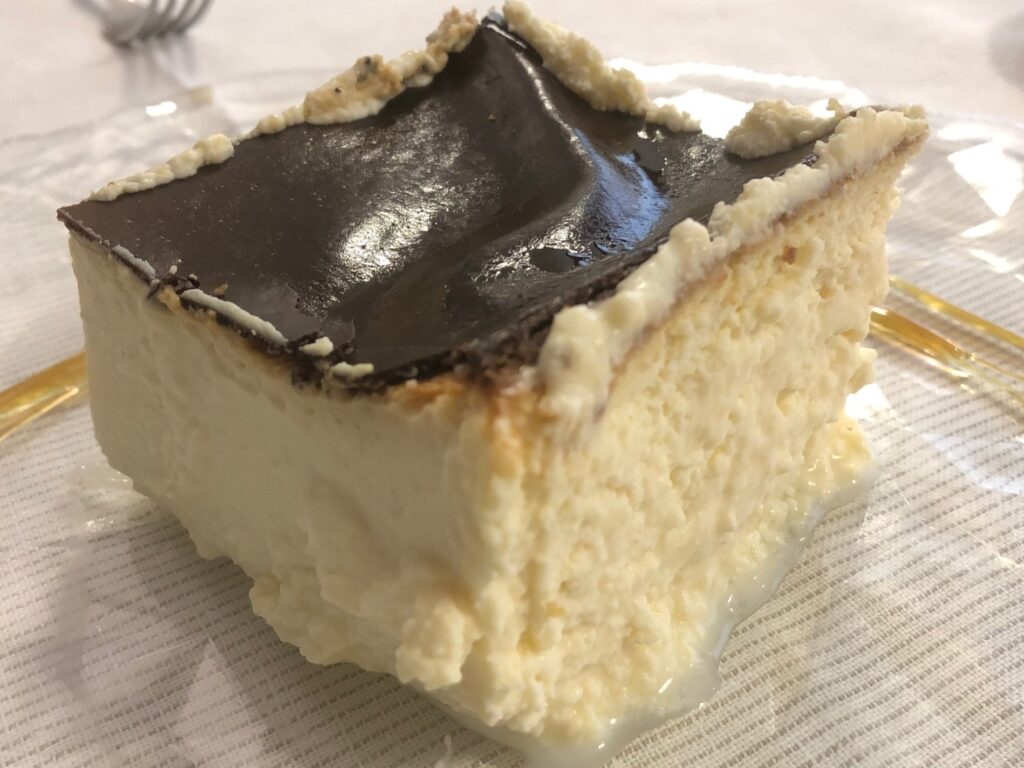
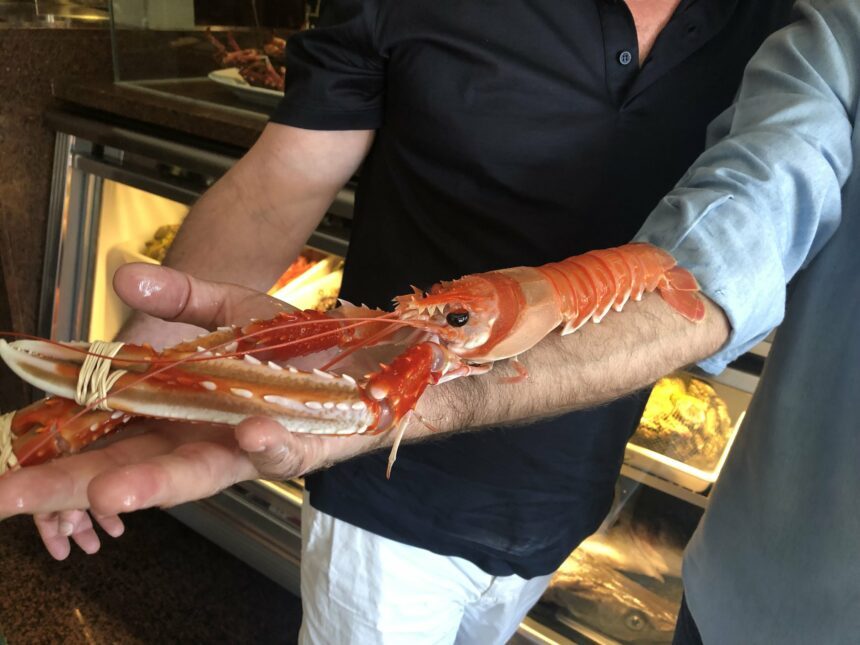


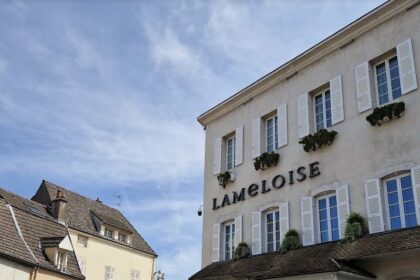
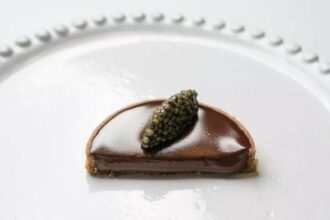
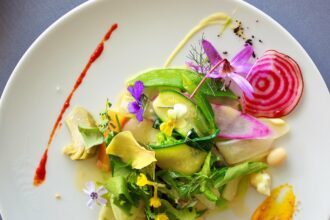
Vedat, you might want to check your notes as those are not "Almejas finas" but rather esculpinas.
Vedat, you might want to check your notes as those are not "Almejas finas" but rather esculpinas.